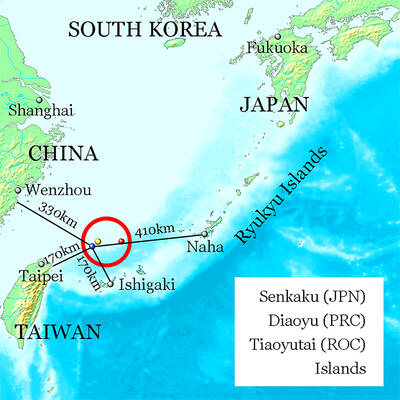Panai (巴奈) A Piece of Blue (那片藍)
Crowd Lu (盧廣仲) 100 Ways of Life (100種生活)
88 Balaz (八十八顆芭樂籽) The 44 Stone Lions (肆十肆隻石獅子)
Wu Bai (伍佰) Spacebomb 太空彈
TC Yang (楊祖珺) A Voice
That Could Not Be Silenced: The TC Yang Collection 1977-2003 (關不住的歌聲—楊祖珺錄音選輯1977-2003)
While politicians bicker endlessly and people eye the economy nervously, Taiwan’s music scene seems like the only thing that’s moving along these days. To be sure, the Mando-pop industry keeps churning out new stars and regurgitating the old ones, but the gems lie in a new generation of independent-minded musicians with a polish and sheen of their own.
If you buy only one CD by a Taiwanese artist this year, make it Panai’s (巴奈) A Piece of Blue (那片藍), a dreamy and sublime collection of acoustic songs spiced with jazz, Brazilian folk and reggae rhythms. This long-awaited second album — inspired by a group of artists in Taitung County’s (台東縣) Dulan Village (都蘭) — shows the 37-year-old singer-songwriter at her best. She naturally draws from her Amis and Puyuma roots, but doesn’t let traditional music dominate her original songs, mostly penned in Mandarin. The various island music grooves sprinkled throughout the album bring a lighter shade to Panai’s melancholy-tinged voice, which sounds both detached and intimate. The result is a beautiful balance: soulful, poetic reflection at a drifting, beachside pace.
There’s a near-magical energy to 23-year-old Crowd Lu (盧廣仲), whose guitar-fueled, sunshine pop is winning the hearts of college kids in the Chinese-speaking world. His full-length debut, 100 Ways of Life (100種生活), sounds as inspired as his personal story: he was in a serious car accident, and while recovering in the hospital he resolved to learn to play guitar. The instrument turned out to be a good match for his agile and highly capable voice; his geek-chic charm and earnest songwriting glued the rest together. Lu’s tunes are about exams, making breakfast and toy robots, which haven’t sounded like so much fun in a long time.
Special mention goes to 88 Balaz (八十八顆芭樂籽), whose solid debut album, The 44 Stone Lions (肆十肆隻石獅子), is full of punk verve and rock ’n’ roll heat, but best of all captures the zany spirit of Taiwanese rock. On the other side of the taike (台客) spectrum is the venerable Wu Bai (伍佰), who has gone into outer space with his latest, Spacebomb (太空彈), a sci-fi concept album that stuffs light social satire into a rock party.
In light of this fall’s Wild Strawberry student protests, TC Yang’s (楊祖珺) retrospective album of folk and protest songs is timely. A Voice That Could Not Be Silenced: The TC Yang Collection 1977-2003 (關不住的歌聲—楊祖珺錄音選輯1977-2003) is a collection of the folk singer-turned-college professor’s recorded output, which includes her renowned version of Formosa (美麗島), a tune that rang throughout various protests by the Dangwai (outside the ruling Chinese Nationalist Party, KMT) movement of the late 1970s and 1980s.
Another of this year’s best albums was Gaga, the first full-length release by 54-year-old Atayal (泰雅) singer Inka Mbing (雲力思), which includes traditional Aboriginal songs as well as original works. The album has an intensity of deeply felt experience, and can be seen and enjoyed as a musical portrait of a people, one that takes in the children’s playground as much as the vast prospects of the mountains which many Atayal call home.
Sodagreen’s third album, Incomparable Beauty (無與倫比的美麗), continues the band’s transition from indie to the pop mainstream without totally selling out its roots. Lead singer Wu Qing-feng’s (吳青峰) voice continues to define the band’s sound, but the album has tight arrangements and good lyrics as well. Sodagreen likes to show its sentimental side, yet never forgoes charm, and often flirts with cute, but is thoughtful enough to avoid insulting the listener’s intelligence.

The Nuremberg trials have inspired filmmakers before, from Stanley Kramer’s 1961 drama to the 2000 television miniseries with Alec Baldwin and Brian Cox. But for the latest take, Nuremberg, writer-director James Vanderbilt focuses on a lesser-known figure: The US Army psychiatrist Douglas Kelley, who after the war was assigned to supervise and evaluate captured Nazi leaders to ensure they were fit for trial (and also keep them alive). But his is a name that had been largely forgotten: He wasn’t even a character in the miniseries. Kelley, portrayed in the film by Rami Malek, was an ambitious sort who saw in

It’s always a pleasure to see something one has long advocated slowly become reality. The late August visit of a delegation to the Philippines led by Deputy Minister of Agriculture Huang Chao-ching (黃昭欽), Chair of Chinese International Economic Cooperation Association Joseph Lyu (呂桔誠) and US-Taiwan Business Council vice president, Lotta Danielsson, was yet another example of how the two nations are drawing closer together. The security threat from the People’s Republic of China (PRC), along with their complementary economies, is finally fostering growth in ties. Interestingly, officials from both sides often refer to a shared Austronesian heritage when arguing for

Last week gave us the droll little comedy of People’s Republic of China’s (PRC) consul general in Osaka posting a threat on X in response to Japanese Prime Minister Sanae Takaichi saying to the Diet that a Chinese attack on Taiwan may be an “existential threat” to Japan. That would allow Japanese Self Defence Forces to respond militarily. The PRC representative then said that if a “filthy neck sticks itself in uninvited, we will cut it off without a moment’s hesitation. Are you prepared for that?” This was widely, and probably deliberately, construed as a threat to behead Takaichi, though it

Among the Nazis who were prosecuted during the Nuremberg trials in 1945 and 1946 was Hitler’s second-in-command, Hermann Goring. Less widely known, though, is the involvement of the US psychiatrist Douglas Kelley, who spent more than 80 hours interviewing and assessing Goring and 21 other Nazi officials prior to the trials. As described in Jack El-Hai’s 2013 book The Nazi and the Psychiatrist, Kelley was charmed by Goring but also haunted by his own conclusion that the Nazis’ atrocities were not specific to that time and place or to those people: they could in fact happen anywhere. He was ultimately